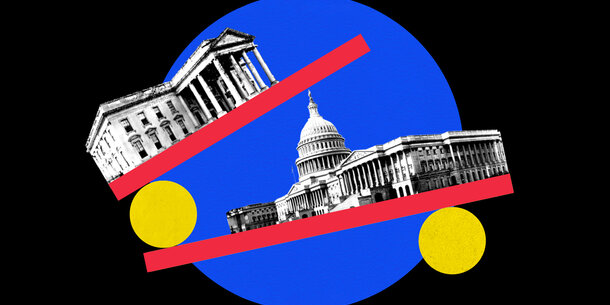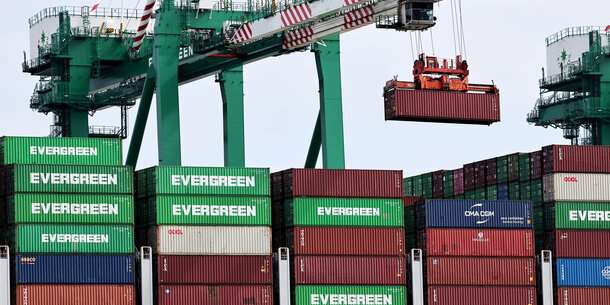You’re reading The Briefing, Michael Waldman’s weekly newsletter. Receive it in your inbox.
The 14th Amendment guarantees that all children born in the United States are citizens. It aimed to undo the notorious Dred Scott ruling, which held that some people born here — Black people, to be precise, free and formerly enslaved — nevertheless were not citizens. As you’ll recall, just hours into his term, President Trump signed an executive order purporting to end birthright citizenship. The order was, and remains, unconstitutional.
The Supreme Court chose this case, out of all the possible cases, to strip judges of a key power used to stop illegal actions.
Instead of ruling on the merits in Trump v. CASA, the justices chose to rule on the legality of universal injunctions, among the strongest tools that lower courts use to block flagrantly unconstitutional policies like these from taking effect while cases play out. These injunctions grant relief not only to the person who brought a lawsuit, but to all affected by the ruling. Instead of every soon-to-be parent affected by the order having to bring a lawsuit to secure citizenship for their baby, only one litigant would have to obtain a universal injunction — guaranteeing relief from an unconstitutional order for all. The six justices of the conservative supermajority decided that such rulings go beyond the power of federal courts when they’re not necessary to give the plaintiffs themselves full protection of the law.
By allowing Trump’s order to partially take effect in 30 days absent further action by the lower courts, the Court has effectively resuscitated Dred Scott, at least for some people, at least for now.
In her dissent, Justice Sonia Sotomayor warned, “No right is safe in the new legal regime the Court creates. Today, the threat is to birthright citizenship. Tomorrow, a different administration may try to seize firearms from law-abiding citizens or prevent people of certain faiths from gathering to worship.”
We at the Brennan Center are still analyzing the ruling. It’s vague at key points. In some respects, it is as great a gift to executive overreach as last summer’s ruling on presidential immunity. On the other hand, alternative avenues to obtain nationwide relief from illegal conduct remain.
Let me share several thoughts.
First, and most obviously: This is one more example of the Supreme Court enabling executive overreach at a time when checks and balances are profoundly strained.
These nationwide injunctions pose complex issues. I have warned about the damage a single judge can do with a gavel and a grudge. Nationwide injunctions blocked key Biden administration initiatives, such as on student loan relief and climate change, and many of Trump’s actions in his first term. Oddly, the Supreme Court had never before ruled on the practice, despite many opportunities to do so during the Biden administration. One could have imagined a decision now that set out sharp limits. Instead, with this decision, these justices have once again gone much further than the case required.
Second, the Court purports to give litigants other ways to broadly challenge illegal actions — but these may be flimsy, even sneaky. People can file a class action lawsuit, for example. Maybe. I was a class action plaintiffs lawyer before I came to work at the Brennan Center. Those lawsuits are cumbersome, expensive, and slow, and they must overcome barriers erected by very conservative judges (and the business lobbyists who backed them for their jobs).
Then there is the question of which judges have had their power stripped. The ruling seems to apply only to lower court judges . . . but does it? For example, if the administration were to defy the Supreme Court, would the Court itself still have the legal authority to enforce its own orders to protect everyone affected? That would, after all, require a universal injunction.
Justice Brett Kavanaugh wrote a concurring opinion, which sought to reassure: Of course the Supreme Court could still take bold action when needed. Some read that as reassuring. Others note that he is just one justice. There’s a reason this appears in a concurring opinion. Kavanaugh may not have been able to bring any of his supermajority colleagues along with him. Even if true, as Ruth Marcus explained in The New Yorker, that means the Court “sided with Donald Trump over the judiciary.”
All of which brings us to the third point: The courts, alone, will not save us. In banning universal injunctions, the Supreme Court relied on an originalist interpretation of the Judiciary Act of 1789. (Sotomayor noted that it amounted to “freezing in amber the precise remedies available.”)
Congress, in other words, wrote the law being interpreted — and could write a new law to clarify what powers federal judges hold when confronted by executive branch lawlessness.
Presidents of both parties have pushed to expand their power, though none as brazenly as Trump. And Congress has settled into torpor, failing over and over to perform its constitutional role.
After this period of institutional demolition will come a moment of reform and renewal. When it does, we should ensure that remedies make it possible to hold lawless presidents accountable, along with addressing issues such as campaign finance and voting rights.
While this Supreme Court may be frozen in 1789, we must think anew and act to ensure the protection of birthright citizenship and so many other constitutionally recognized rights. In the meantime, we must give our full support to efforts to hold this administration accountable through the courts, using any and every tool that remains.



